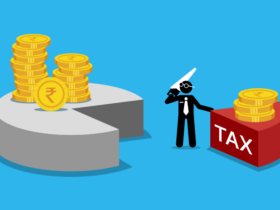
Image Credit: https://www.istockphoto.com/photo/business-failure-bankruptcy-stressed-out-managers-gm1169655373-323423121
A financial crisis may occur to any individual and business. It does not mean that you do not have other alternatives except insolvency. Every business needs credits essentially from their vendors and lenders to grow and expand. There may be economic inflation, huge business losses, and other monetary hardships that may lead to huge unpaid debts of your business.
In some cases, you can manage to pay off these debts while other cases may need you to close and dissolve your company. To best deal with the situation you need to understand the insolvency and the available alternatives to save your company.
What is company insolvency?
Insolvency is a financial distress when a company fails to perform their financial responsibilities to the lenders. When a company faces insolvency, they are unable to pay their bills which ultimately results in accumulation of huge lenders’ debts. Insolvency can arise due to poor cash management, reduction in cash inflow, overspending, more loss than profit, and economic inflations.
Here are a few criteria which may contribute to company insolvency.
- When a vendor increases the cost of their product or services, your company will also rise their costing for the consumer. Hence, your consumer may look for your alternatives where they have to pay less. This results in losing existing consumers and incurring business loss for you.
- Sometimes your company may fail to update their product or lacks the use of trending innovative technologies to make their products. Eventually, your products and service may fail to fit with your consumers’ changing needs and your business ceases to sell their products.
- Probably, a country’s lawsuits are associated with success or failure of businesses. The new leading government may introduce new taxes on different goods and service which may increase your company’s tax liabilities.
These situations lead the company towards reduced profitability and hence their expenses exceed revenues and your bills remain unpaid to pile up as huge debts. Insolvency and bankruptcy are two different financial conditions. Insolvency may cause a business to become bankrupt.
You can hire a professional financial advisor to help your business survive during insolvency. Insolvency Online is the insolvency practitioners and business advisors licensed by the ICAEW, having over 30 years of recovery and insolvency experience and expertise in London.

Image Credit: https://www.istockphoto.com/photo/directions-to-the-crisis-and-opportunity-gm1176283100-327889296
What do you do when your company is insolvent?
When you find your business is unable to pay its debts, you must ask for financial support from your shareholders or request your bank to refinance your fixed assets. You can also convince your vendors or lenders to accept instalment payments of the unpaid dues.
Here are the main options available for business having insolvency.
1. Voluntary administration
When the directors put the company in voluntary administration, a voluntary administrator takes the control over the company to investigate the financial affairs and suggest recommendations to help bringing it back to life. All the directorial powers, like control over financial books and records, are transferred to the appointed voluntary administrator.
2. Liquidation
It is usually considered the last solution for insolvency. Liquidation means winding up the company’s affairs, dismantling the company structure, selling the company’s entire assets and distributes proceedings to its creditors. When a company goes into liquidation, it means company cannot pay its debts and decides to wind up its business.
3. Receivership
During administration or liquidation, the directors of the company may place it in receivership status. A receivership takes place when the secured creditor nominates an external person, known as the receiver, to sell and collect the company’s assets.
This may happen when the company is found to faulty either due to non-payment of dues or breach of other terms. Once the receiver has sold enough company’s assets to pay off its creditors’ debt, the receivership terminates to return back the powers of original directors.










